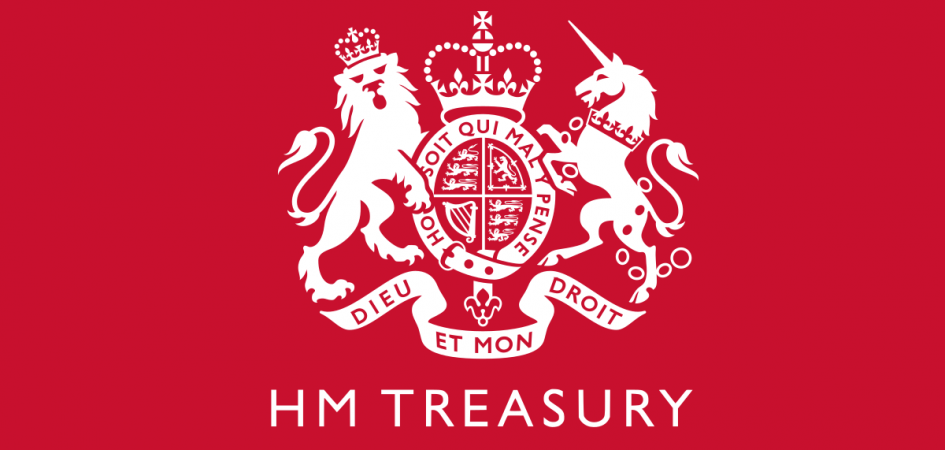
Published on: 01 December 2022

Key announcements and reactions
Autumn Statement
On 17 November 2022 the Chancellor, Jeremy Hunt, delivered his Autumn Statement, seeking to regain the confidence of the financial markets by insisting he will work closely with the Bank of England to restore economic stability and promote growth. Addressing the House of Commons, the Chancellor said the £55bn plan to repair public finances through a mix of tax rises and spending cuts would be guided by “compassion”. He confirmed that benefits and pensions would rise in line with inflation, while the majority of spending cuts would be deferred until after the next General Election which must be called by December 2024.
Below is a summary of the key announcements and the Office for Budget Responsibility’s (OBR) economic forecasts, together with reactions from various business groups and think tanks.
Energy support for households – Since October 2022, the Government has capped the unit cost of gas and electricity for households, through the Energy Price Guarantee, meaning that a household with ‘typical’ energy use will pay an average of £2,500 per year for six months. From April 2023, the cap on the unit cost of gas and electricity will be increased from £2,500 to £3,000 for a household with ‘typical’ energy use and last for one year.
Energy support for businesses – There was no specific mention of this in the Chancellor’s speech but the Autumn Statement included the terms of reference for the review of the Energy Bill Relief Scheme which has provided businesses with a discount on wholesale gas and electricity prices. It confirms that from 31 March, there will be significant reduction in the support provided which will be targeted at those businesses least able to absorb energy price rises. The outcome of the review is now expected before Christmas.
Taxes – From 2024/25, net revenues from taxation will increase by over £20bn per year.. The tax burden is forecast to reach 37.5% of GDP in 2024/25, the highest level since the end of WW2. The ratio is then forecast to fall to 37.1% of GDP by 2027/28, which is a level the OBR describes as the “highest sustained level for seven decades”.
Business Taxes
Business rates – several announcements including:
- Retail, Hospitality and Leisure Relief is being extended and increased from 50% to 75% in 2023/24.
- Business properties will be revalued for business rates from 1 April 2023. Transitional relief will be provided to limit bill increases following the revaluation.
- The business rates multiplier at 51.2p (or 49.9p for small businesses) will be frozen in 2023/24 rather than rise in line with inflation.
- There will be an increase in the Energy Profits Levy from 25% to 35% from 1 January to 28 March, and there will be a new temporary 45% levy on electricity generators from 1 January.
- A vehicle excise duty on electric cars, vans and motorcycles will be introduced from April 2025.
National Insurance – The level at which employers start to pay NICs for their employees will be frozen at £9,100 from April 2023 until April 2028. This is the single biggest tax raising measure in the Autumn Statement, raising £25 billion across the forecast.
VAT – registration and deregistration thresholds will remain at their current level of £85,000 for two more years from April 2024. The thresholds have already been frozen from April 2022.
R&D – Research and Development tax reliefs are being reformed and the Government will increase funding up to £20bn by 2024-2025. In addition it will increase funding to the UK’s nine innovation catapults by 35%.
Economic forecasts provided by the OBR
GDP growth – The OBR confirmed the UK economy is already in recession with high inflation squeezing household budgets being the main factor behind the weak economic outlook. The OBR expects GDP to fall by 2.1% during this recession, which is expected to run from Q3 2022 to Q3 2023. GDP won’t fully recover to its pre-pandemic level of Q4 2019 until Q4 2024, five years later,
Inflation – The OBR expects inflation to peak at 11.1% this quarter, up on its previous forecast for a peak of 8.7%. Due to falling gas prices, market expectations of higher interest rates, and tighter fiscal policies the OBR forecasts the inflation rate to come down quickly during 2023 and 2024. However, this will partly depend on interest rate levels which it assumes will peak of 5% in the second half of 2023
Household incomes – With inflation at a 40-year high of 11% household budgets are getting squeezed. Even with substantial government support to households the OBR forecasts a reduction in average living standards of around 7% in total over this year and next.
Business investment – The OBR forecasts this will be “much weaker” than previously anticipated in March this year due to factors such as high energy prices and higher interest rates. Overall, it anticipates that by the end of 2024, business investment will be 12% lower than it forecast in March 2022.
Long term growth assumptions – From 2027, the OBR thinks the economy can grow sustainably by 1.7% per year.
The OBR left unchanged its assumption that Brexit would lead to the UK’s trade intensity – how much it exports and imports – being 15% lower in the long run than if the UK had remained in the EU.
Reactions following the Statement
The British Chamber of Commerce praised the Chancellor’s focus on “financial stability and targeting support for the most vulnerable”, but argues it will do little to boost business confidence and urges the Government to do more to improve conditions for businesses to invest and grow.
Similarly, the CBI’s response to the Autumn Statement praised the Statement for delivering stability but argued more needs to be done to promote growth.
The Federation of Small Businesses’ response said the Statement was “high on stealth-creation and low on wealth-creation” and would increase “pressure on the UK’s 5.5 million small businesses, their employees and customers.” It claims the reduction in dividend taxation allowances will be particularly burdensome on small businesses, as will freezing the threshold for employer NICs and the increase in the living wage, which they claim will “will ramp up the costs of employment without offsetting that with measures to reduce other business costs.”
The Institute of Fiscal Studies found that on balance the decision to backload to fiscal consolidation was the right choice given the uncertainty regarding the economic outlook and the “potential economic and social costs of an unnecessarily large up-front fiscal tightening”, but questions how credible the Government’s plans are to sharply reduce spending growth from 2025 onwards.
The Institute for Economic Affairs (IEA) response argues that the result of tax increases could be a “deeper and longer economic downturn – ultimately resulting in less taxpayer revenue over the long-term” and that the Chancellor has “chosen to protect pensioners and those on welfare” at the expense of those in employment.
The Adam Smith Institute response argues the Statement was a return to “managed decline” and failed to “strike the right balance between fiscal credibility and growth.” Whilst welcoming more targeted support for vulnerable households, it criticised the lack of “genuine pro-growth reform”.
The Centre for Policy Studies describes the Autumn Statement as “a sensible and measured response to the fiscal challenges facing the country”, and praised freezing tax thresholds as the “least-worst option for raising the tax burden” but calls for a “comprehensive growth plan to be developed and implemented”.

